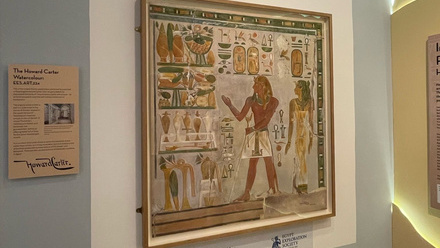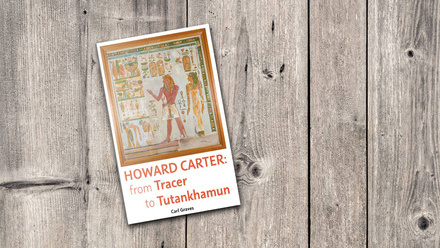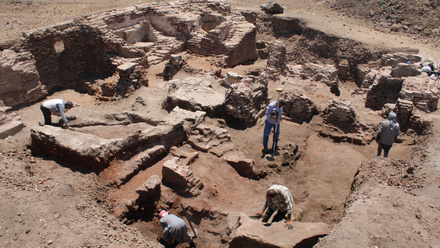A Society of its time: SPMAE
by Carl Graves
The Egypt Exploration Society holds many records relating to its history over the last 135 years but it also holds the archive of another society too – the Society for the Preservation of the Monuments of Ancient Egypt (SPMAE). Though not as long-lived as the EES, SPMAE had its share of successes in the field of Egyptology but was markedly different to the aims and achievements of its companion institution. Here, Carl Graves, gives a brief introduction to SPMAE, its leading members and key achievements.
SPMAE was founded on 8 August 1888 in the Fulham studio of Sir Edward Poynter (PRA) in a meeting attended by Sir Frederick Burton (RHA, Director of the National Gallery), Lawrence Alma-Tadema (RA), William Matthew Flinders Petrie, and Wallis Budge, among others. Originally called the Committee for the Preservation of the Monuments of Ancient Egypt, it was established for “… the preservation of the splendid and interesting remains of the land of the Pharaohs, by aiding the Egyptian Government, as far as the means and influence of the society will admit, to protect them from the depredations of the Arabs, and from injury done by tourists or others, by means of doors and enclosures, and by the appointment of responsible guardians and inspectors; and where possible, by works calculated to resist and neutralize the encroachments of the Nile” (COR.08.a.02). The Committee was soon changed to a Society and attracted many influential members.
The Society was headed by two Honorary Secretaries; Sir Edward Poynter (RA) and Henry Wallis (painter of a piece showing Petrie excavating at the Ramesseum and now stored at UCL, EDC2674). Both were artists, the former is perhaps most well-known for his painting, ‘Israel in Egypt’ (1867). This epic composition may shed some light into Poynter’s desire to preserve the monuments of Egypt, for their romantic and somewhat orientalist inspiration in his works.
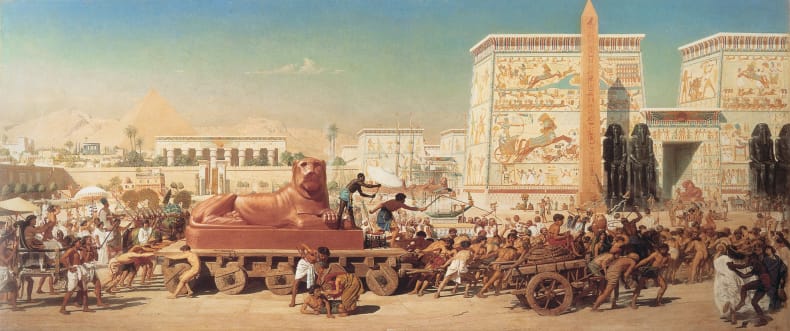
Israel in Egypt (1867) by Sir Edward Poynter, Courtesy of the Guildhall Art Gallery, London
Poynter’s wife, Agnes MacDonald was the sister of Georgiana, wife of the Pre-Raphaelite artist Edward Burne-Jones (ARA) who also became a member of SPMAE in its early foundation. Poynter painted portraits of the MacDonald sisters, as well as other influential members of SPMAE, such as Sir Edward Maunde Thompson (first Director of the British Museum and Vice President of the EES).
Other members included Sir Frederic Leighton (PRA), Sir Austen Henry Layard (Assyriologist), Sir Peter le Page Renouf (British Museum), Reginald Stuart Poole (EES), Amelia Edwards (EES), George Frederic Watts (RA), and William Holman-Hunt. The last of these had a very close relationship with Petrie after first meeting during Petrie’s exhibition of Hawara mummy portraits in Egyptian Hall, Piccadilly during June-July 1888. It was during this exhibition that Petrie met several artists that would later go on to support SPMAE. It was one of these, Henry Holiday (RA) that later introduced Petrie to Hilda Urlin in 1896, whom he married later that year. Hilda had previously modelled for the Pre-Raphaelite artist as one of the companions in ‘Dante and Beatrice’ (1884), though she turned down this lifestyle for a remarkable career as an archaeologist for the remainder of her life.
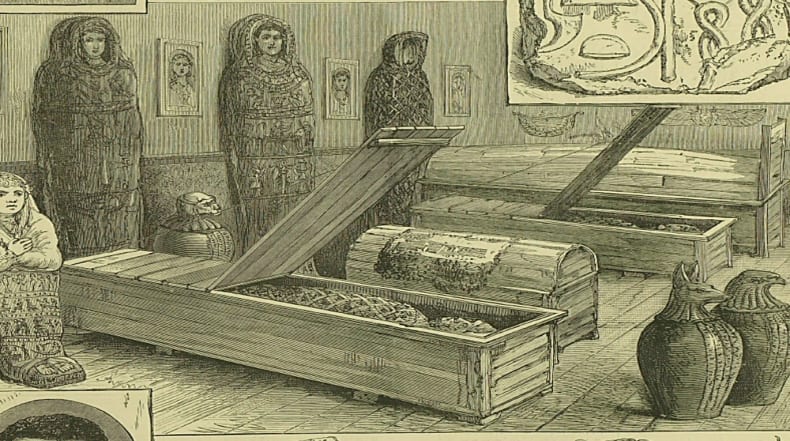
The exhibition of Hawara mummy portraits at Egyptian Hall, Piccadilly as reported in the Illustrated London News in 1888
With this formidable group of artists at the helm, SPMAE achieved many of its objectives during its 22-year history. Working closely with the Foreign Office, the Society successfully campaigned for funds to be levied from increasing numbers of tourists and put towards the maintenance and protection of temples at Luxor. Less successful was their petition against the transfer of antiquities from Boulaq Museum to an old Khedival palace at Giza, which went ahead in 1892. Even less successful – and rather politically sensitive – was the campaign to appoint an English inspector over the French antiquities department. The matter was taken quite seriously by the British authorities in light of the ongoing destruction of monuments under the French administration. However, the matter was deferred and nothing came of it – though support for the EES’ Archaeological Survey of Egypt in 1890 masterminded by Francis Llewellyn Griffith no doubt came from this increased awareness.
SPMAE sent funds in 1891-2 to help Petrie construct protective buildings over the painted pavements discovered at Amarna. Though it was later destroyed by an angry local, the remains of the pavement now in the Cairo Museum owes much of its state to this initiative by SPMAE and Petrie’s quick thinking with regard to its preservation.
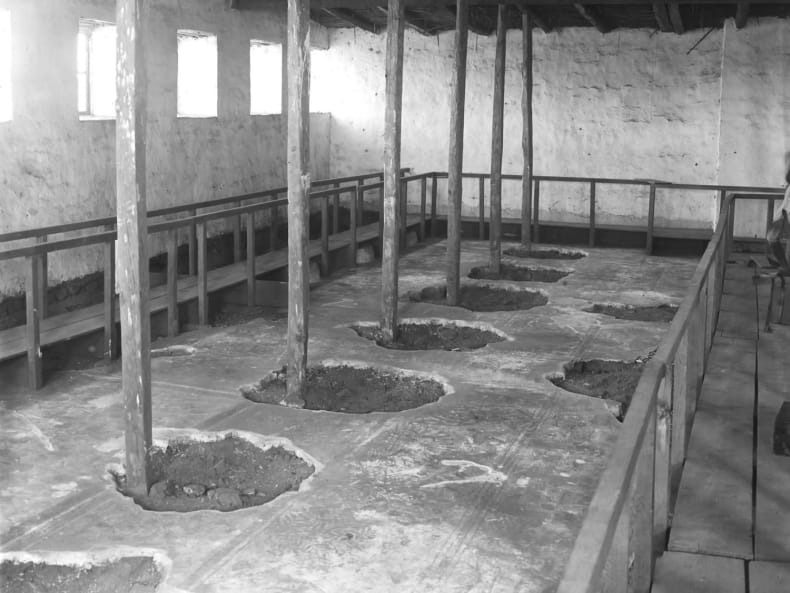
The painted pavement at Amarna protected by a building financed by the Society for the Preservation of the Monuments of Ancient Egypt
The Society also financially supported the construction of a water pumping station near Karnak to reduce destruction of the temples from salinization – a project that has protected the monuments for future generations.
In 1910, after successes, setbacks, and failures the Society for the Preservation of the Monuments of Ancient Egypt was ended. Though its aims were of their time, idealistic, perhaps even romantic, they closely followed similar organisations of the arts and crafts movement – one has only to consider the legacy of William Morris’ Society for the Preservation of Ancient Buildings to see how successful the Society could have been. Ultimately however, preservation – as distinct from exploration and excavation – was never to be as attractive for public financial support. The tense political situation in Egypt between the British and French authorities, meant that many of the Society’s projects were unrealistic. Presenting the Society’s archive to the Egypt Exploration Society (or Fund as it was known) in 1910 meant that its story continues. Research is ongoing and insights can also be found in several articles and books (see below).
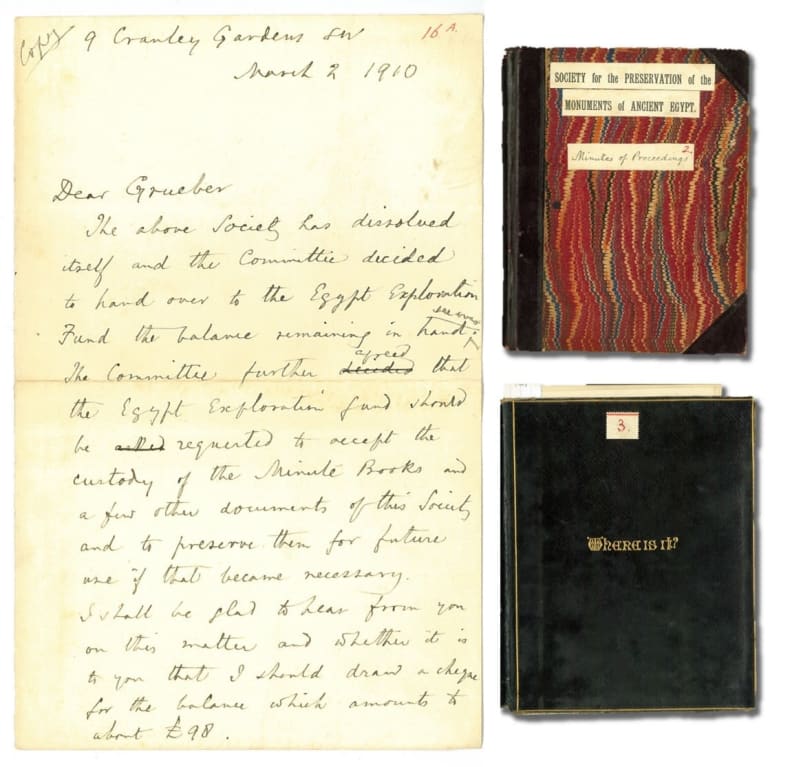 Letter to Greuber from reporting the closure of SPMAE and presenting their archive to the EEF in 1910, right the minute book (top) and membership address book (bottom) for SPMAE
Letter to Greuber from reporting the closure of SPMAE and presenting their archive to the EEF in 1910, right the minute book (top) and membership address book (bottom) for SPMAE
Today three of SPMAE’s leading members, Edward Poynter, Lawrence Alma-Tadema, and William Holman-Hunt are buried in the crypt of St Paul’s cathedral within close proximity. No mention is made of their involvement in SPMAE – but we know that they shared more than just artistic skills, they also had a passion for preserving Egypt’s heritage.
Further reading
Drower, M. S. 1985. Flinders Petrie: A Life in Archaeology. London: Victor Gollancz Ltd.
Gange, D. 2013. Dialogues with the Dead: Egyptology in British Culture and Religion, 1822-1922.Oxford: Oxford University Press.
Gange, D. 2015. ‘The Ruins of Preservation: Conserving Ancient Egypt 1880–1914’, Past Present 226 (10), 78-99.
Riggs, C. 2014. Unwrapping Ancient Egypt. London: Bloomsbury Academic.

